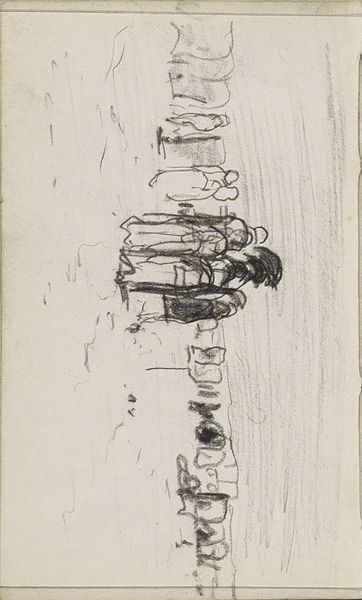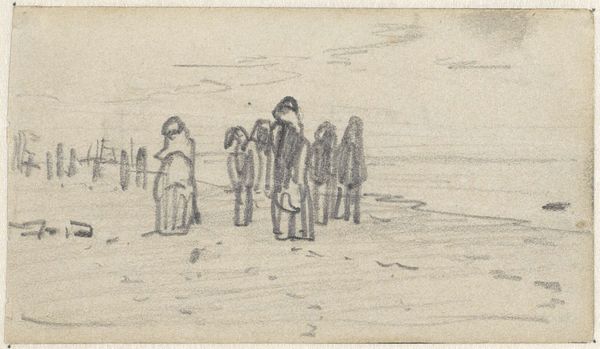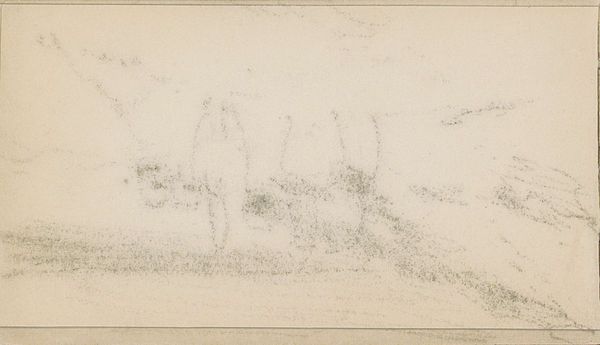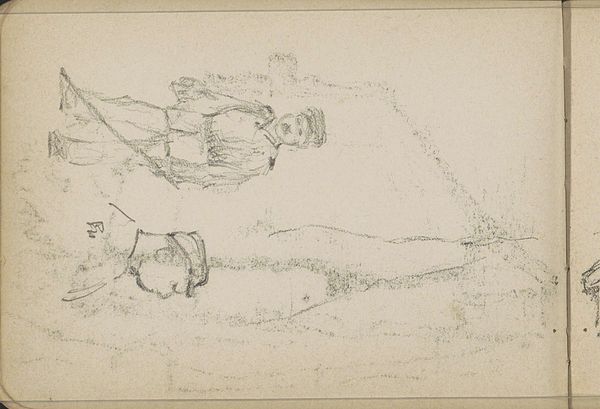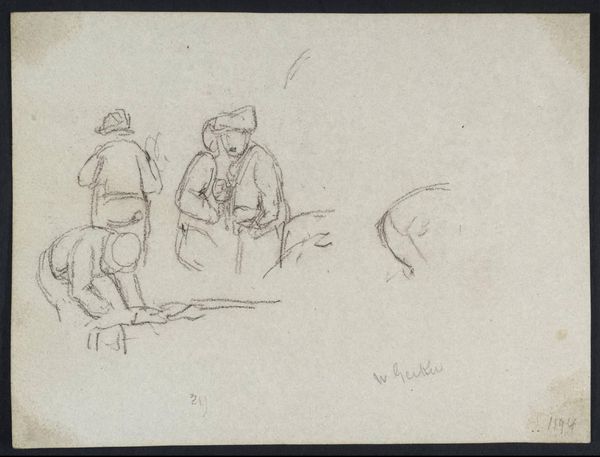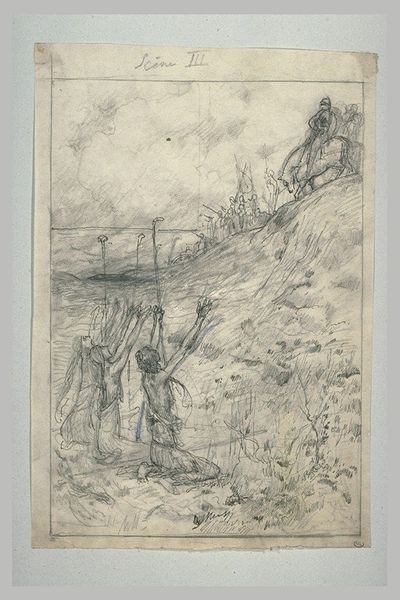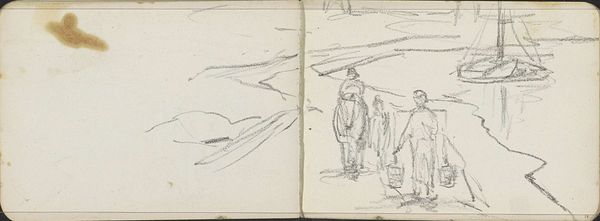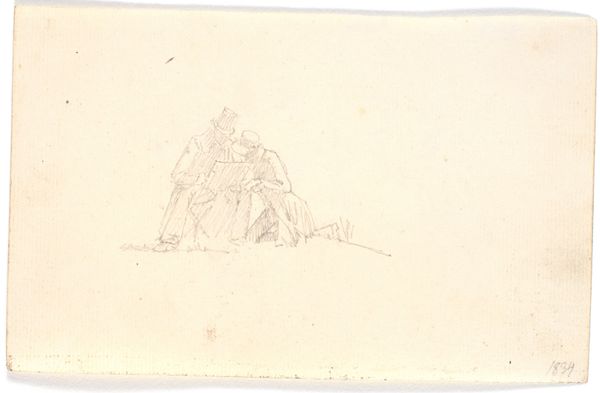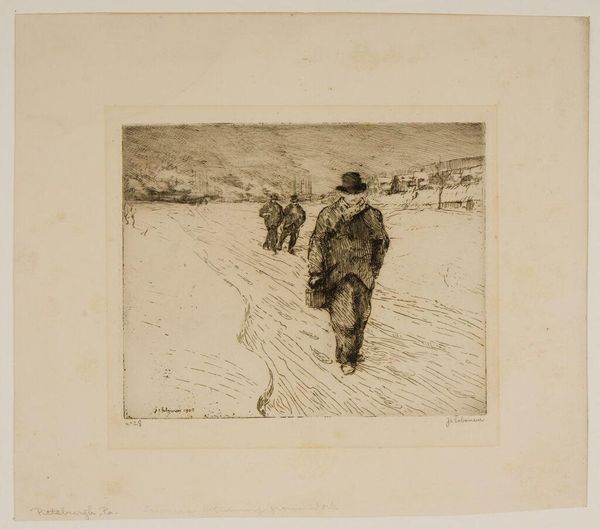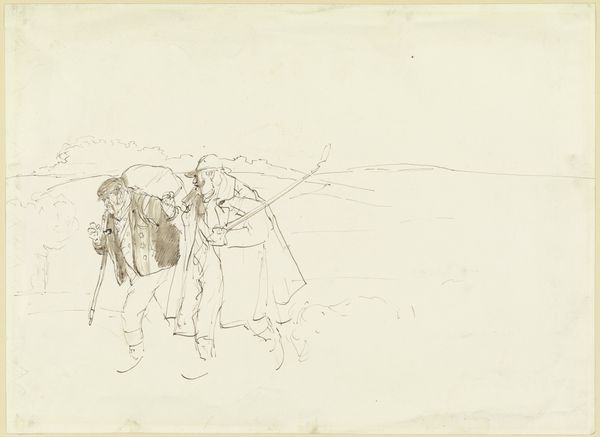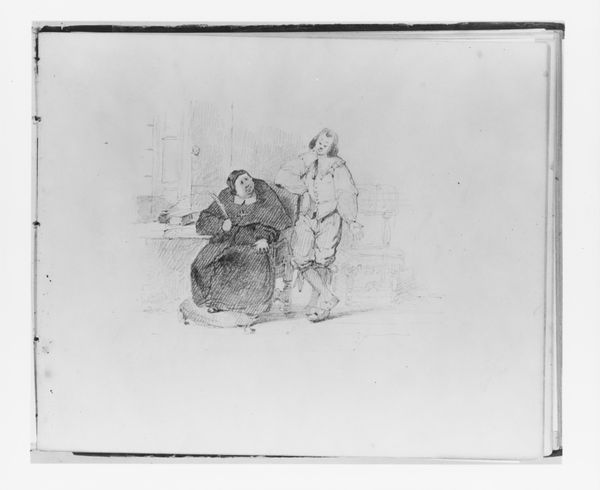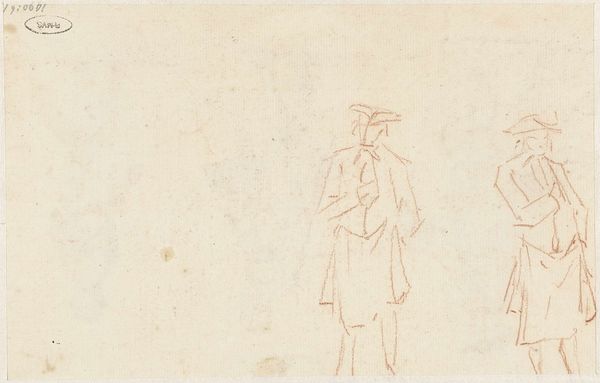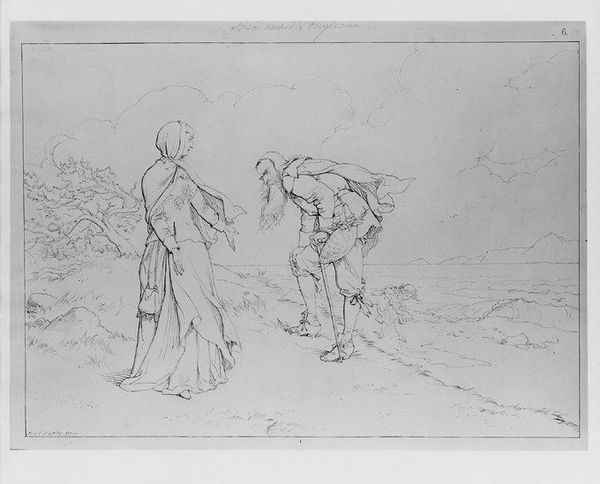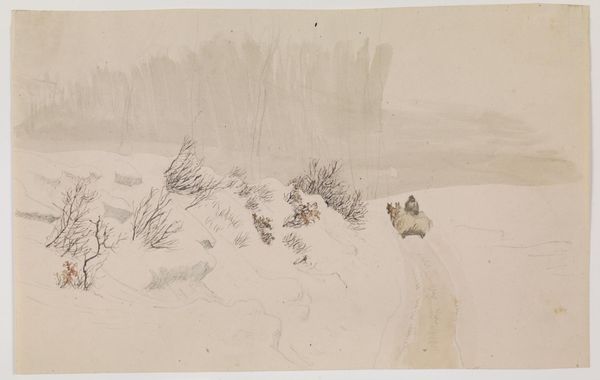
drawing, pencil
#
drawing
#
dutch-golden-age
#
impressionism
#
etching
#
figuration
#
pencil
#
genre-painting
#
realism
Dimensions: height 250 mm, width 364 mm
Copyright: Rijks Museum: Open Domain
Editor: Here we have "Scaatsenrijders," or "Skaters," by Jozef Israëls, probably from the late 19th century. It's a pencil drawing at the Rijksmuseum. The sketchiness makes it feel quite immediate, almost like a snapshot. What strikes you about this piece? Curator: Its immediacy comes precisely from its reliance on readily available and affordable materials. Pencil and paper – consider how radically that democratizes artistic creation. How does the industrial production of these materials inform who gets to participate in image making? Who could afford paints and canvases? Editor: That’s interesting, I hadn't thought about that. So, the material accessibility impacted who could even be an artist? Curator: Exactly. And think about the subject itself: skaters, an everyday scene of leisure. This wasn't a commissioned portrait or a grand historical narrative. Israëls is depicting common recreation. How does the industrialization of leisure impact its representation in art? Does it democratize subject matter in art? Editor: So, he’s choosing both a medium and a subject matter that reflects the everyday experience. Does the rapid production of pencils and paper mirror the accessibility of the sport to everyday people in the Netherlands at this time? Curator: Precisely! It moves beyond aesthetics and gets at production, consumption, and the art market's structures. Israëls isn't just depicting skaters, he is implicitly engaging with how shifts in industrial production enabled everyday subject matter to be captured and consumed. What else do you see? How would an artist depict such a scene without these technologies and materials? Editor: I suppose it changes our perception of realism; we tend to take these accessible materials and ordinary subjects for granted. It makes you wonder what the 'true' subject of the work really is. Curator: Absolutely. Seeing beyond the surface allows us to explore the interplay of materials, labor, and social change in art history.
Comments
No comments
Be the first to comment and join the conversation on the ultimate creative platform.
